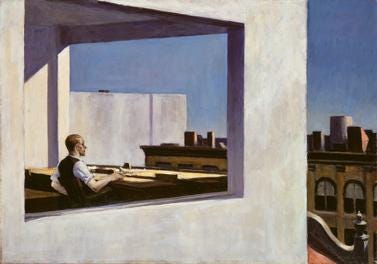Critical Mass
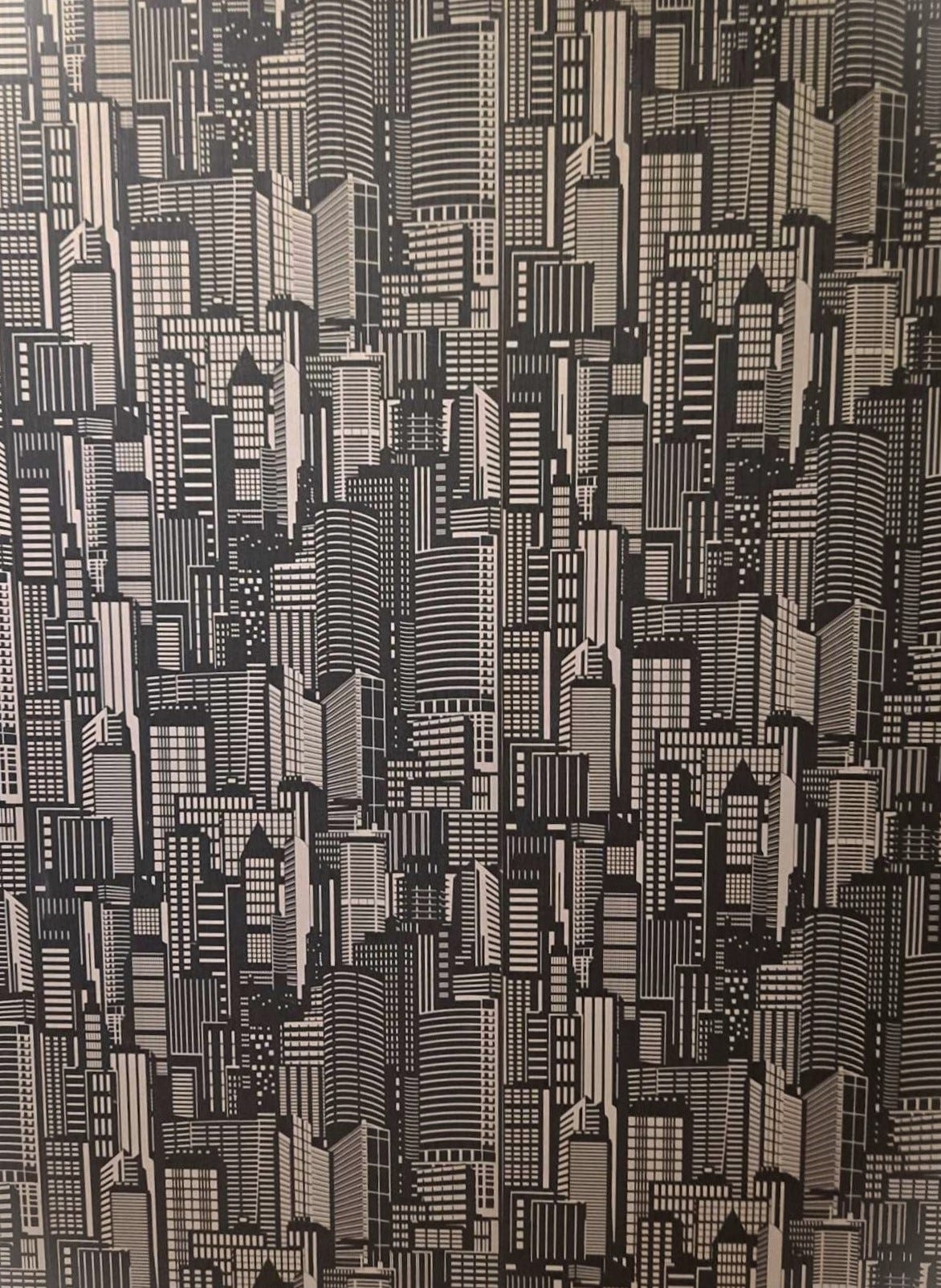
Modern cities are a critical mass of different people, competing ideologies and countless manifestations of globalisation that produce chaos and confusion at almost every level. In truth, I had been struggling for an introduction, a logical starting point for this article for days on end and in my own personal struggle I have missed the irony of the fact that modern cities increasingly have no logical start or end point; they seem to grow and grow, without boundaries and limits. As such, finding fulfilment and meaning is increasingly hard in modern cities. In fact, modern cities have come to embody all the contradictions with modernity: materially abundant but spiritually void they have become a hive of endless contradictions and conflict. The rat race and the hamster wheel are well known metaphors used to describe the city, cities have basically become a zero-sum game whereby everyone runs faster and faster in order to stay in the same place. Cities serve the interests of capitalism, globalisation and our elites much more than they do the interests and wellbeing of the people. Modern cities conspire to separate us from both our families and nature. This article draws on themes and ideas related to globalisation, industrial society, capitalism and other similar areas of inquiry.
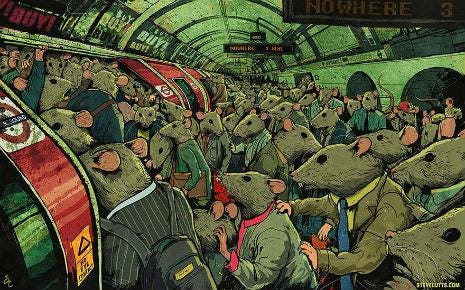
If modern cities have a religion, it is globalisation. The lasting, enduring symbol of the modern city is the skyscraper and almost every major city has one. Originally, skyscrapers were modelled on the cathedral, cathedrals point upwards towards God and transcendence, towards a higher power. Skyscrapers are similar only they point upwards towards the gods of capitalism and money. You can’t help but notice the irony in the symbolism here as, over time, as skyscrapers have slowly replaced cathedrals as the tallest buildings in the western world capitalism has replaced religion in the hearts and minds of the people. It sounds almost trite to point this out but in major cities throughout the world today, people are materially wealthy but spiritually poor. Our lives have become cluttered with trivial amusements, endless propaganda and meaningless junk. People consume to try and find fulfilment and satisfaction but end up finding nothing but emptiness.
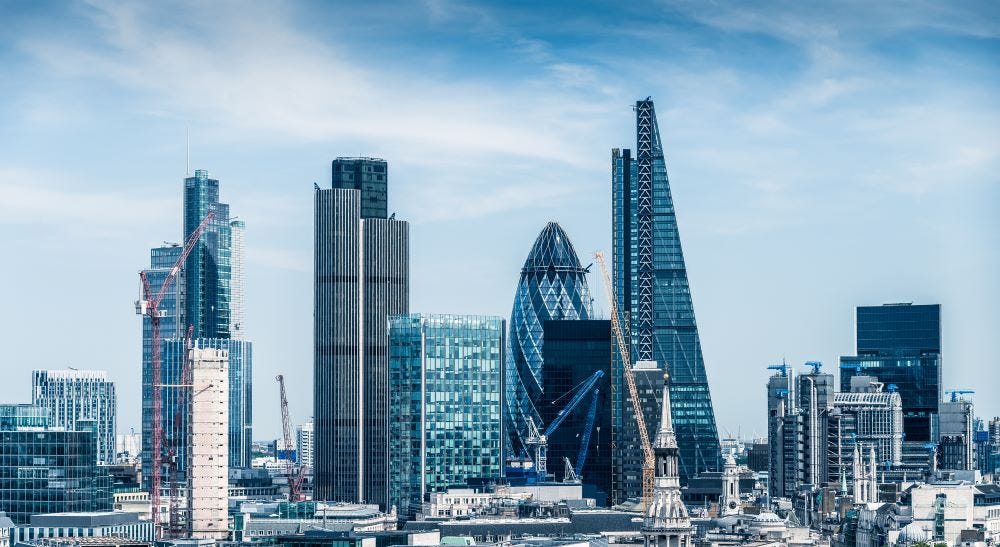
Furthermore, in an interesting dichotomy, modern cities not only have a rapidly changing skyline and cityscape (consisting of huge towers of glass and steel) but also a rapidly changing high street as well (one comprised of Turkish barbers, vape shops, kebab takeaways, shisha vendors and more). The contradictions that modern cities offer up are endless.
On that note, alongside the skyscraper, another fitting symbol for the modern city is the relatively new innovation of the modern storage unit, whereby customers rent space to store their excess belongings. There are now hundreds of these facilities up and down the country, dotting the landscape seemingly wherever you go. From the outside, they have the appearance of a sarcophagus, built to contain the evil that lies within and, on that level at least, the storage space is itself a good metaphor for the city. It says a tremendous amount about our culture that these have become so common. The storage facility is just one part of the architecture of globalisation. Even my local high street is full of money changers, visa processing centres, freight and logistics companies and translating businesses all of which amounts to a parallel market that enables and sustains globalisation.

This leads me on to a rather fitting analogy, for when I think of the modern city I am instantly reminded of the popular 80s game Tetris in that the layout, design and the logic behind the game are very similar with modern cities. The only real purpose of Tetris is to build and expand: you build one layer on top of another on top of another and, in theory at least, this can go on forever. The game is always sending more shapes (called “tetrominoes”) your way and your job is to make sure you have an even row and a clear grid. The grid-like format to the game looks like a modern cityscape composed of high-rise apartments, the score is the GDP and the whole emphasis of the game seems to fit perfectly with the ‘line go up’ and the ‘build build build’ mentality. The tetrominoes are like problems that need to be accommodated any way possible, however when they don’t fit the game quickly spirals out of control and descends into chaos and disorder. The game Tetris parallels the challenges that modern cities present us with as we are constantly fighting against the current of modernity and the tide of problems that come our way and however much you try it will never be enough.
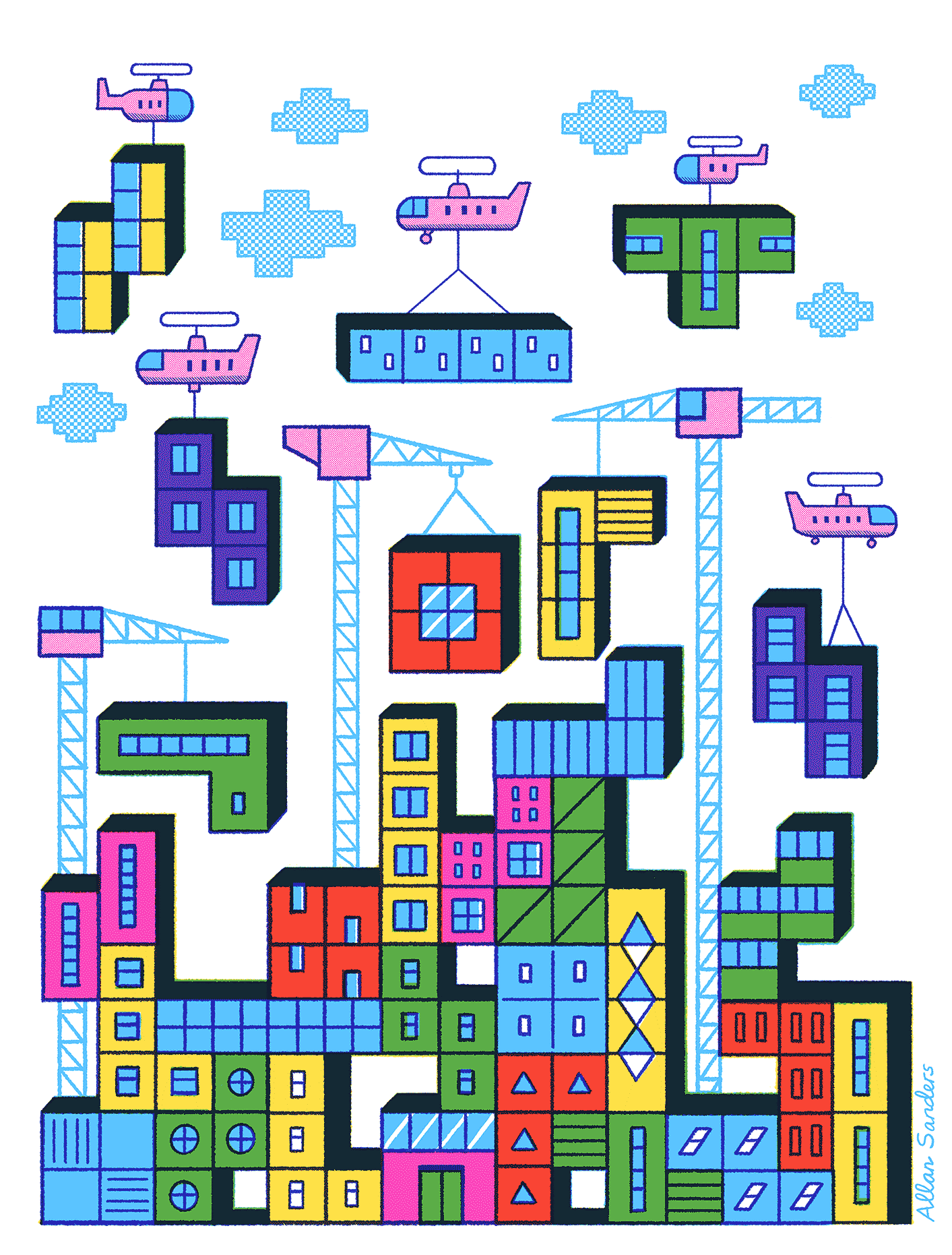
Mass and Scale
Cities are a question of mass and scale. A transit system, a shopping centre even a high rise building all have their uses, they are good up to a point. The problem comes when too much of this infrastructure is built it overwhelms the area, it is incredibly damaging to the environment and local areas lose much of their tradition and heritage too. Indeed, one of the central problems with modern cities is that because new people are always being brought in new infrastructure has to be built in order to sustain these new people, so almost by necessity cities need to keep growing and expanding. After all, the more people there are the more houses, schools and hospitals you will need, there is simply no denying this. However, this cannot go on forever. The infrastructure that globalisation demands is hard to build and hard to maintain, a common retort you hear in many countries is that construction is never ending. In fact, I am of the opinion that whether you are in Japan, the United States, Western Europe or any other region once you pass a certain critical mass of people and population density, broadly similar problems will arise wherever you are. You cannot simply keep bringing in more and more people and not expect there to be problems later down the line. If you keep building and building, embedded structural problems are inevitable and unavoidable.
The concept of mass and scale applies to people as well and nothing has done more destruction to our once great cities, and the way of life that they used to embody, than the free movement of people (better known as mass immigration). The more people there are the greater the stress on the core infrastructure, utilities and public services, this in turn requires increased state intervention to maintain them causing more disruption to daily life and all the while generally requiring higher taxation in order to so. The more people the greater the scarcity of essential resources (primarily in housing, healthcare and education), this causes prices to rise and greatly reduces our quality of life. Lastly, the more people there are the greater the downward pressure on wages and working conditions and the harder social mobility becomes as a result. When the economy declines this exacerbates all the above; increasing crime, tension and welfare dependency, reducing freedom and prosperity. Against the backdrop of mass migration, bad economic and social conditions turn the city from a melting pot into a pressure cooker. The United Kingdom demonstrates this best: a small and old country not built for the rigours of globalisation it has a shortage of housing, crumbling schools and a failing healthcare system. Yet more and more people come in every year, with immigration reaching record levels in 2022 with 1.2 million arrivals. This is simply unsustainable.
Increasingly, more and more of our cities have fallen into disrepair. They suffer from deteriorating infrastructure, overcrowdedness, underinvestment and poor services. I have written about this separately here in Reflections #6 but walk through any British city today and you will likely be greeted by bordered up shops, abandoned vehicles, graffiti and litter, set to the backdrop of an increasingly unrecognisable high street and with our cities now overrun by gangs, crime, poverty and neglect in equal measure.
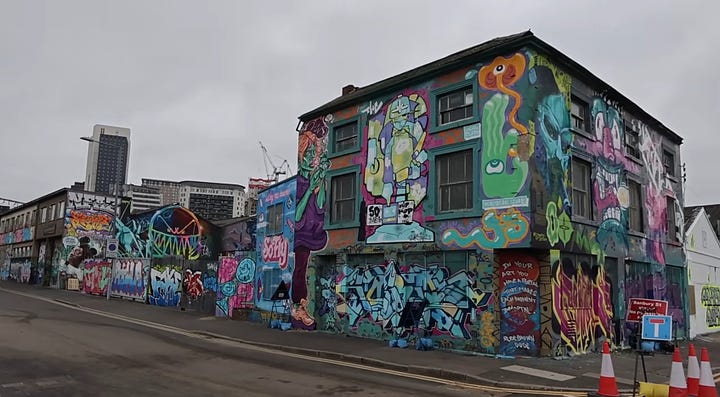
Social Impact
Civic and communal institutions tend to be weak in cities. The church, schools, community centres, volunteer organisations, youth clubs, charities and libraries are all mutually reinforcing parts of the community that help to build a strong and cohesive society. However, these institutions all require a certain amount of civic engagement and participation, a high level of trust and strong communal ties as well all of which are found lacking in modern cities. The city, along with the various ideologies contained within it, deconstruct the foundations of community and tradition.
Globalisation accelerates the free movement of people and promotes open borders, the problem is that the more people in a city and the more diverse a city is the harder it is to maintain the mutual obligations required for a high trust society. A high trust society is one rooted in strong communal relations, high civic engagement and a strong attachment to the local area and the wider community. However, the symptoms of modern cities - particularly high crime, rising prices and long commutes - all conspire to reduce civic engagement and participation in the community, and the result is that people become reclusive and withdraw from society altogether producing an alienated, atomised and totally dislocated populous.
The correlation between industrialisation and alienation has been made by many but Edward Hopper, an artist from the United States, captured the loneliness and dislocation brought on by the rapid industrialisation of America from the 1930s onwards in a particularly powerful way that still resonates with many today. Though his work has a distinct American quality to it (as one might expect), Hopper’s work says a lot about the nature and the effects of industrial society more broadly: atomised people are lost within themselves and lost within the world. They are consumed by loneliness and isolation even when they are surrounded by others. I have added some pictures below but strongly urge everyone to explore his work.
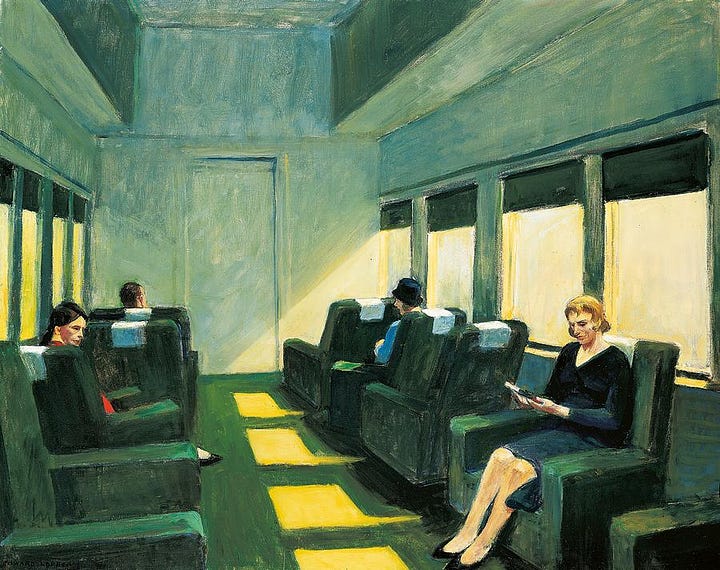
Along with declining social institutions and increasing alienation and atomisation is the growing mental health problems we have. Byung-Chul Han, a contemporary German-Korean philosopher, explores the idea that rather than improving life, industrial society has led to a range of cognitive and mental health problems. The search for what he terms as a ‘constant neural connection’ along with sensory overload leaves us fatigued and exhausted. Han is right: modern cities are a cacophony of noise, chaos and confusion, a hive of sensory overload. Cities have become an unrelenting assault on the senses; swarms of people, long traffic jams, permanent delays, constant waiting, construction everywhere with multinational corporations bombarding us with endless advertisements to buy and consume their products. Navigating all of this is stressful and as such modern cities just seem to drain all the life and energy out of people. As a society, as a civilization we are, as Han might say, burnt out. We are exhausted!
Neoreactionary thinkers Nick Land and Spandrell have some interesting ideas about the nature of cities, particularly the concept of the ‘IQ shredder’. Using Singapore as their paradigm example, Spandrell posits that modern cities absorb bright and intelligent people who invariably end up producing a society based on high culture, consisting of a variety of amusements and distractions it fosters a way of life that, over time, removes them from the gene pool. As such, he calls cities ‘IQ shredders’, referring to how the liberal, cosmopolitan culture of cities will always deconstruct pro-natalist instincts and behaviour, collapsing the birth rate in the process. As a result the birthrate drops but Singapore circumvents this problem by bringing in more and more high IQ people. But all that happens is that these new arrivals become consumed by the IQ shredder, succumbing to the same entropic forces laid out above. Along with Han’s concepts of exhaustion and fatigue, I think this goes at least some way to explaining why birthrates have collapsed in many cities as well as articulating many of the contradictions in modernity more broadly.
Modern cities are the brainchild of our elites, serving the interests of our political, corporate, industrial and financial overlords more than the people who actually live there. From huge skyscrapers and multinational corporations to powerful banks, cities are a modern, outward expression of globalisation and all that it entails. The problem is that growth and expansion come at a cost, a cost that I believe we bear with every passing day.
